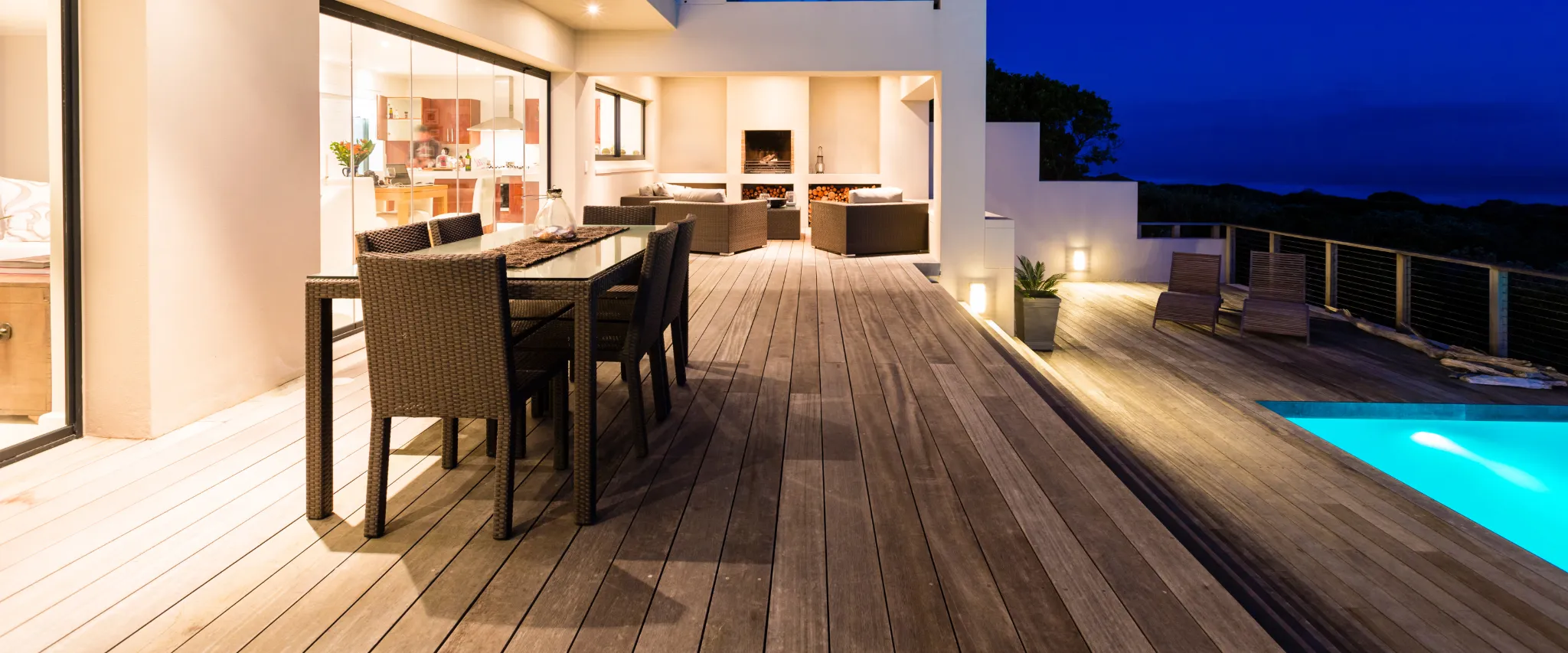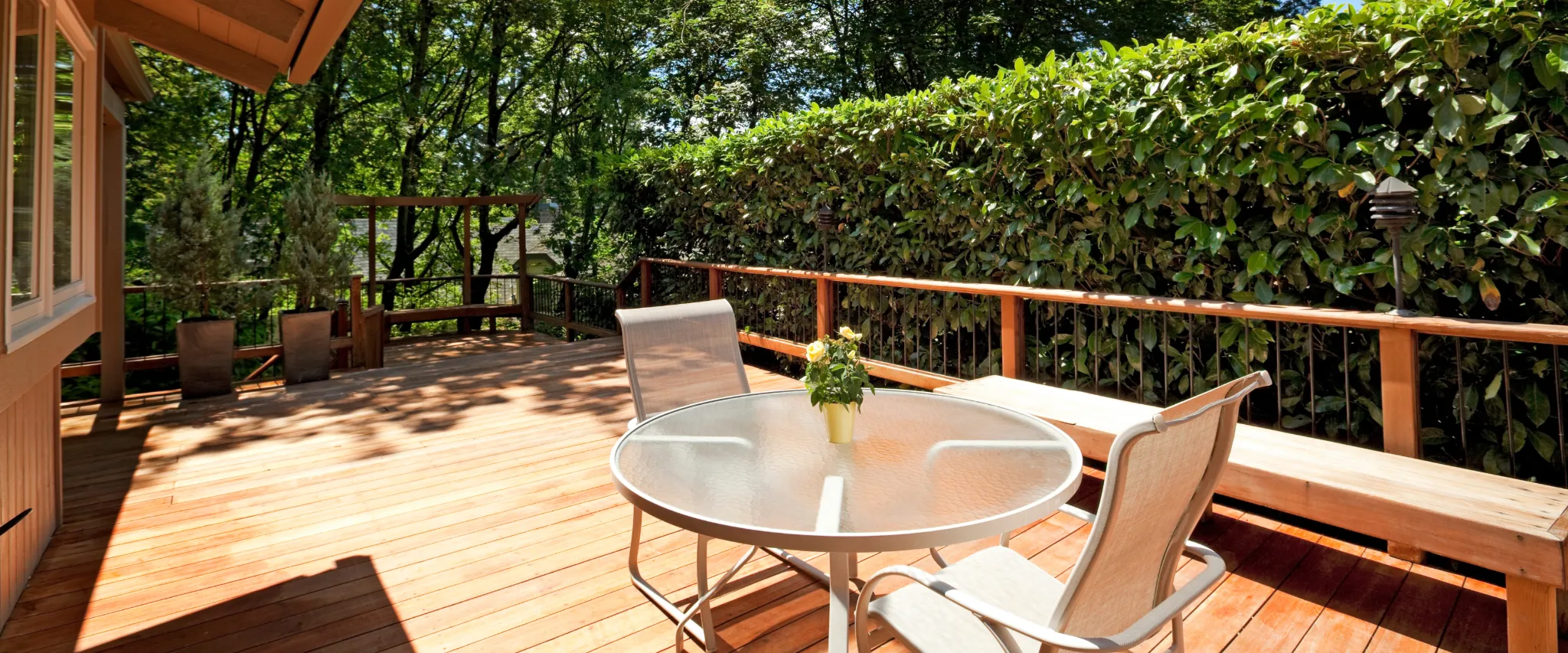Iowa Deck Building Codes: What You Need to Know
Building a deck can be a fantastic way to enjoy the outdoors and add value to your home, but it’s important to follow the rules. In Iowa, deck building codes are in place to make sure your deck is safe, sturdy, and up to code.
This guide will walk you through the key points of Iowa’s deck building.

Why Do Deck Building Codes Matter?
Do You Need a Permit to Build a Deck in Iowa?
Yes, in most cases, you’ll need a building permit before starting construction on your deck. Here’s what you should know:
- Check with Your City or County: Different areas in Iowa may have slightly different requirements, so it’s best to contact your local building department to find out what’s needed.
- When Is a Permit Required?: A permit is usually required if your deck is attached to your house or more than 30 inches off the ground. Smaller, freestanding decks may not need a permit, but it’s always a good idea to double-check.
- How to Apply for a Permit: You’ll need to submit a plan that shows the size, height, and materials of your deck. The local authorities will review it to make sure it meets safety standards.
Key Iowa Deck Building Codes
Now, let’s dive into some of the main deck building codes you’ll need to follow in Iowa. These cover everything from the size of your deck to the materials you use.
1. Footings and Foundations
The foundation of your deck is what keeps it stable. In Iowa, the following rules apply:
- Depth of Footings: Footings must extend below the frost line to prevent shifting during freezing and thawing cycles. In Iowa, this usually means digging at least 36 inches deep.
- Size of Footings: The size of your footings depends on the size of your deck and the weight it will support. Larger decks or decks with heavy features like hot tubs will need bigger footings.
- Spacing: Footings should be spaced no more than 8 feet apart, but this may vary depending on your deck’s design.
2. Deck Joists
Joists are the horizontal beams that support the decking boards. Iowa has specific requirements for joist spacing and size:
- Spacing: Typically, joists should be spaced 16 inches apart for standard decking materials. If you’re using thinner boards, the spacing may need to be closer.
- Joist Size: The size of the joists depends on the span (distance between supports). For example, a 2×8 joist can usually span about 12 feet.
3. Railings and Guardrails
Railings are a critical safety feature for decks, especially if they’re elevated.
- When Are Railings Required?: In Iowa, railings are required for decks that are more than 30 inches off the ground.
- Height of Railings: Guardrails must be at least 36 inches high.
- Spacing Between Balusters: The space between vertical balusters should be no more than 4 inches to prevent children or pets from slipping through.
4. Staircases
If your deck includes stairs, these rules apply:
- Tread and Riser Size: Treads (the part you step on) must be at least 10 inches deep, and risers (the vertical part) should be no taller than 7.75 inches.
- Handrails: Stairs with four or more risers need a handrail. The handrail should be between 34 and 38 inches above the tread.
5. Materials
Using the right materials is key to a safe and durable deck.
- Pressure-Treated Wood: This is the most common material for decks in Iowa because it resists rot and insects.
- Fasteners: Use galvanized or stainless-steel screws and bolts to prevent rust and ensure a secure hold.
- Sealing and Staining: Applying a sealant or stain to your deck can protect it from Iowa’s weather extremes.
6. Load Requirements
Your deck must be able to support specific loads:
- Live Load: This refers to the weight of people, furniture, and other items on the deck. In Iowa, decks must support at least 40 pounds per square foot.
- Dead Load: This is the weight of the deck itself, including all materials. Dead load requirements vary based on your deck’s design.

Inspections: A Step You Can’t Skip
After getting your permit and before you start using your deck, you’ll need inspections to ensure it’s built correctly. Here’s what to expect:
- Pre-Pour Inspection: Before pouring the concrete for your footings, an inspector will check their depth and spacing.
- Framing Inspection: Once the deck frame is complete, it will be inspected for proper joist spacing, fasteners, and overall construction.
- Final Inspection: This happens when your deck is fully built. The inspector will check everything, including railings, stairs, and materials.
Tips for Staying on Top of Iowa Deck Building Codes
- Start with a Good Plan: Draw up detailed plans before applying for a permit. This will save time and ensure your deck meets all requirements.
- Work with Professionals: If you’re unsure about building codes or construction methods, consider hiring a licensed contractor who knows Iowa’s regulations.
- Keep Updated: Building codes can change, so make sure to check with your local building department before starting a new project.
Common Mistakes to Avoid
Building a deck isn’t just about following codes; it’s also about avoiding mistakes that can cause problems down the line. Here are some common issues to watch out for:
- Skipping the Permit: Even if you think your deck is small, always check if a permit is needed.
- Using the Wrong Materials: Not all wood is suitable for outdoor use. Always choose pressure-treated or rot-resistant wood.
- Improper Fasteners: Don’t use nails or non-galvanized screws, as they can rust or fail over time.
- Poor Drainage: Ensure water doesn’t pool around your footings or on your deck boards.
Does Iowa Have Special Deck Rules for HOA Communities?
If you live in a community with a homeowner’s association (HOA), you may need to follow additional rules. These might include:
- Appearance: Some HOAs have strict guidelines about the style, color, or materials you can use.
- Approval Process: You might need to submit your plans to the HOA for approval before applying for a building permit.

FAQ: Iowa Deck Building Codes
Yes, most cities in Iowa require a permit for deck construction. Check with your local building department for specific requirements.
The railing must be at least 36 inches high for residential decks in Iowa.
Yes, inspections are typically required to ensure the deck meets safety standards and building codes.
Footings generally need to be at least 36 inches deep to extend below the frost line, but check your local codes for exact requirements.
Final Thoughts: Building a Deck in Iowa
Building a deck in Iowa is an exciting project, but it’s important to do it right. By following Iowa’s deck building codes, you’ll create a safe, sturdy structure that you can enjoy for years to come. From choosing the right materials to getting the necessary permits, every step matters.
We’re experts in designing and building decks that meet all Iowa building codes, ensuring safety and quality every step of the way. Contact us today at (402) 369-5724 for a free consultation and start planning your dream deck!
